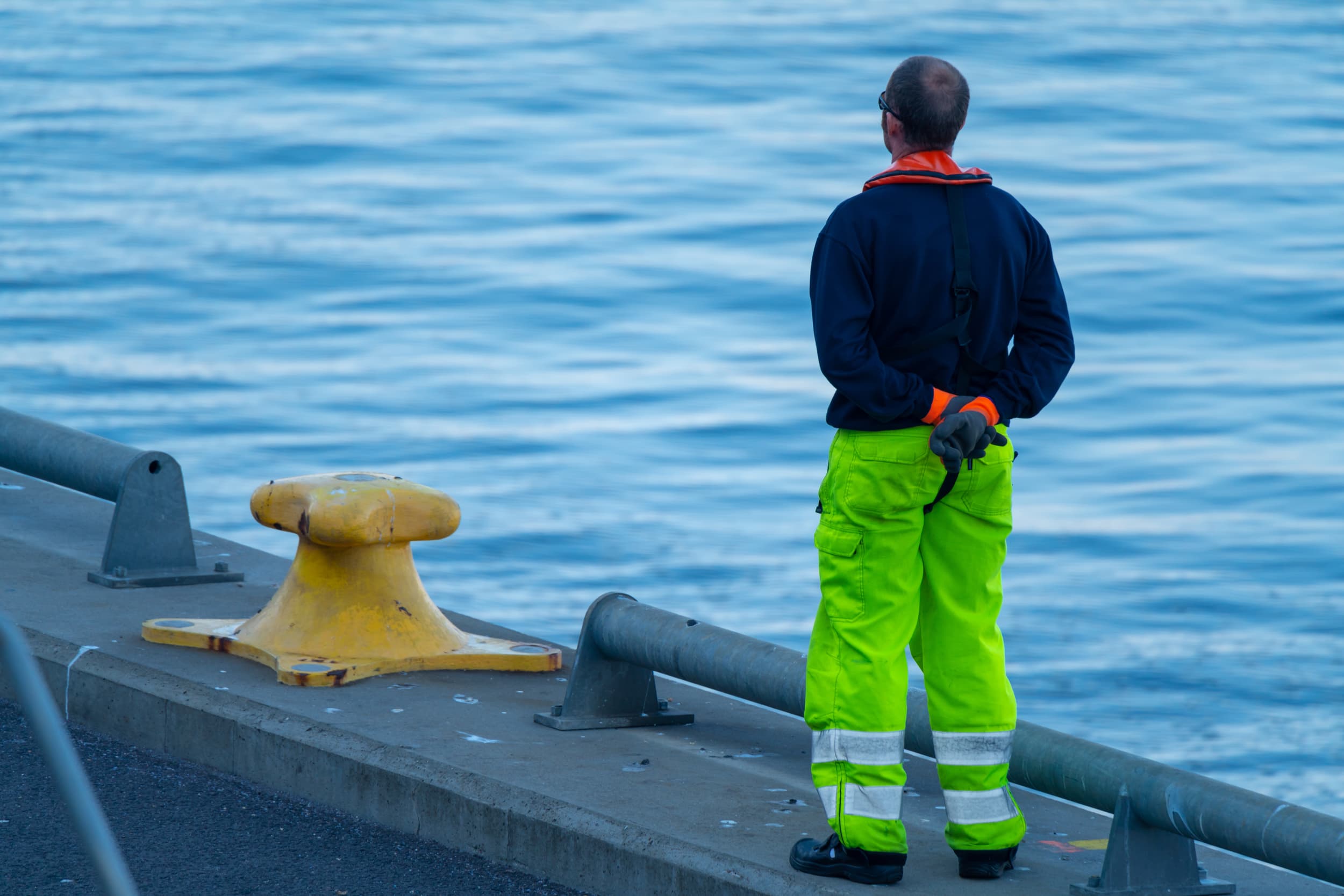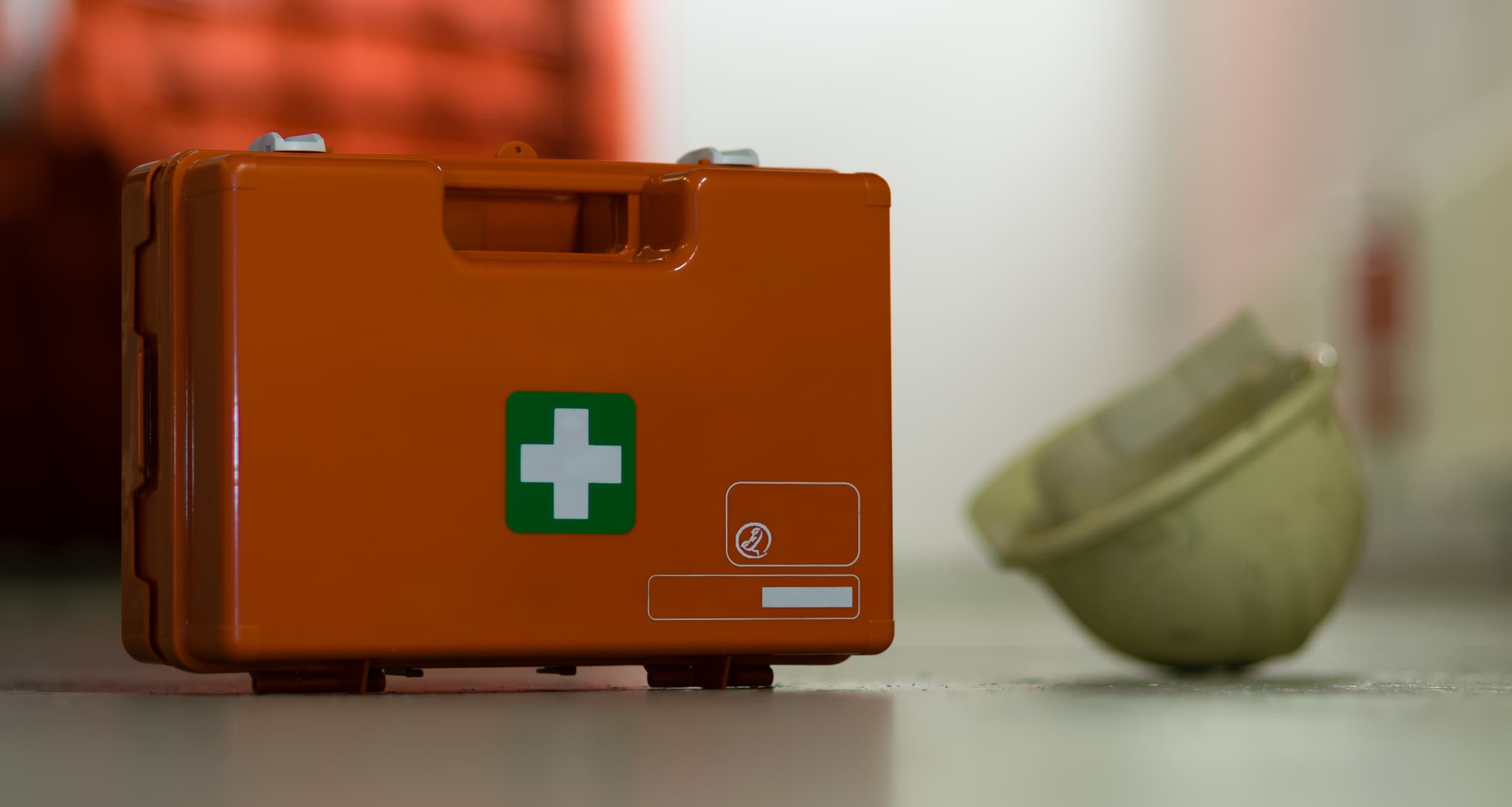Shipyard Chemical Hazards & Toxic Substances
Online Training Certification Course
29 CFR 1915, 1917, 1918
From the highest rated and most trusted online training company - since 2008.
Course content includes applicable regulations, risks, and key safety practices relating to hazardous cargo; hazard communication; welding, cutting, and heating; longshoring; hazardous atmospheres and substances; and ventilation and atmospheric conditions.
Shipyard/maritime personnel may be exposed to toxic or hazardous substances in the form of gases, vapors, fumes, dusts, mists, liquids, sludges, or solids. Signs of exposure may be immediate or delayed, sometimes for months or years. Consequences of exposure to maritime toxic substances can be serious, life-threatening, and even fatal. Workers in shipyard/maritime industries must receive specialized chemical hazards training to understand these risks and how to prevent them.
This maritime chemical hazards training course covers the responsibilities of employers and employees, as well as applicable federal regulations that protect employees from harm.
This course is for:
This shipyard chemical hazards training is designed for anyone who works in the maritime and shipyard industry. In general, the term "maritime" refers to activities relating to vessels or otherwise taking place in marine terminals or shipyards. In order to ensure a safe work environment, every employee has a right to know about the chemical hazards and toxic substances he or she might come in contact with in the workplace. This safety training may help prevent serious injury in the workplace and save lives.This online certification course meets the requirements set forth by OSHA for safety training related to shipyard chemical hazards and toxic substances in maritime industries.
Case Study: The abandoned Delta Shipyard has left toxic chemicals to seep into the wetlands of Terrebonne Parish, Louisiana for decades. A few hundred yards from the old shipyard are three, 3-acre ponds covered with a crusty black layer, which investigators said appears to be dried oil waste. Concentrations of potentially dangerous contaminants, such as benzene, barium, arsenic, lead, and chromium, were also detected in a ditch that runs alongside the pits. The ditch drains into a canal through which the contaminants have spread to the wetlands.
Key Takeaway: Toxic chemicals and hazardous substances affect more than just workers. When improperly disposed of, these chemicals can have devastating impacts on the environment and nearby residential areas. It is the responsibility of employees and employers of shipyards to be sure that toxic waste is disposed of safely.
Available languages: 100+ languages - translation provided by Google Translate (Select Language bottom of page)
Governing Regulations
The Occupational Safety and Health Act of 1970 created the Occupational Safety and Health Administration (OSHA). OSHA, an agency of the U.S. Department of Labor, is charged with the enforcement of safety and health conditions of workers through the use of regulations published in the Code of Federal Regulations.
OSHA standards are published in Title 29 of the Code of Federal Regulations. Parts 1915, 1917, and 1918 are reserved for the maritime and shipyard industry. Regulations concerning maritime chemical hazards and shipyard toxic substances are found in 29 CFR 1915 Subpart Z.
Additional OSHA chemical hazards regulations include the following:
- 29 CFR 1917, Marine Terminals
- 29 CFR 1917.22-25, Hazardous Cargo
- 29 CFR 1917.152-153, Welding, Cutting, and Heating
- 29 CFR 1918, Longshoring
- 29 CFR 1918.90, Hazard Communication
- 29 CFR 1918.93, Hazardous Atmospheres and Substances
- 29 CFR 1918.94, Ventilation and Atmospheric Conditions
What You'll Learn
- Introduction to Maritime Chemical Hazards and Toxic Substances
- Types of Health Hazards
- Toxicology
- Routes of Entry
- Special Considerations for the Maritime Industry
- Key Terms
- Regulations and Standards
- State Regulations
- International Maritime Dangerous Goods Code (IMDG)
- Responsibilities-Employers
- Responsibilities-Employees
- Training
- Competent Person
- Hazard Awareness
- Recognition of Health Hazards
- Common Health Effects of Chemical Hazards
- Employee Exposure and Medical Records
- Hazard Monitoring
- Hazard Communication Standard
- Occupational Exposure Limits (OELs)
- Safety Data Sheets
- Labels
- Hazard Communication Standard
- Exposure Controls
- Elimination/Substitution
- Engineering Controls
- Ventilation
- Administrative and Work Practice Controls
- Personal Protective Equipment
- Respiratory Protection
- Selecting Respiratory Protection
- Respirator Components
- Types of Respirators
- Respiratory Protection Program
- Maritime Industry Chemicals and Toxic Substances
- Gases
- Gas Properties
- Common Hazardous Gases
- Vapors
- Common Hazardous Vapors in Shipyards and Marine Terminals
- Fumes
- Common Hazardous Fumes in Shipyards and Marine Terminals
- Dusts
- Dust in Shipyards and Marine Terminals
- Mists
- Common Mists in Shipyards and Marine Terminals
- Asbestos
- Asbestos Classification
- Asbestos Employer Requirements
- Lead
- Lead Exposure Levels
- Lead-Medical Surveillance
- Hexavalent Chromium
- Cadmium
- Summary
- Additional Resources
- Exam
It will take a MINIMUM of 2 hours to complete this online course. The student may log on and off as needed. A bookmark will be set so when they log back in they will return to where they left off.
We have no restrictions on how long a person takes to complete a course. Likewise, if you are purchasing for others, we have no time limit on assigning courses, so you can purchase a larger quantity than you currently need and take advantage of volume discounts.
Employers are responsible for providing new personnel with toxic substances training before assigning them to tasks that may expose them to chemical hazards and toxic substances.
To ensure compliance with OSHA shipyard toxic substances training, proper safety training must be conducted annually. This maritime toxic substances training meets the requirements set forth by OSHA toxic substances regulations.
Each student will receive 0.2 CEUs (or 2 CMEs) from Compliance Training Online® for completing this course.
Shane C
Shipyard Chemical Hazards & Toxic SubstancesGreat.
Harry P
Shipyard Chemical Hazards & Toxic Substancesinformative and easy to follow
THE BEST ONLINE TRAINING EXPERIENCE POSSIBLE
Fast
Your time is valuable. We've designed our site to be as fast as possible.
Easy to use
You'll never get lost or confused with us.
Immediate Access
There's no waiting period. Begin the course as soon as you sign up.
Anywhere Anytime
Internet connection and a computer, tablet, or smartphone.
Up to date
We update our courses as soon as new regulations come out.









